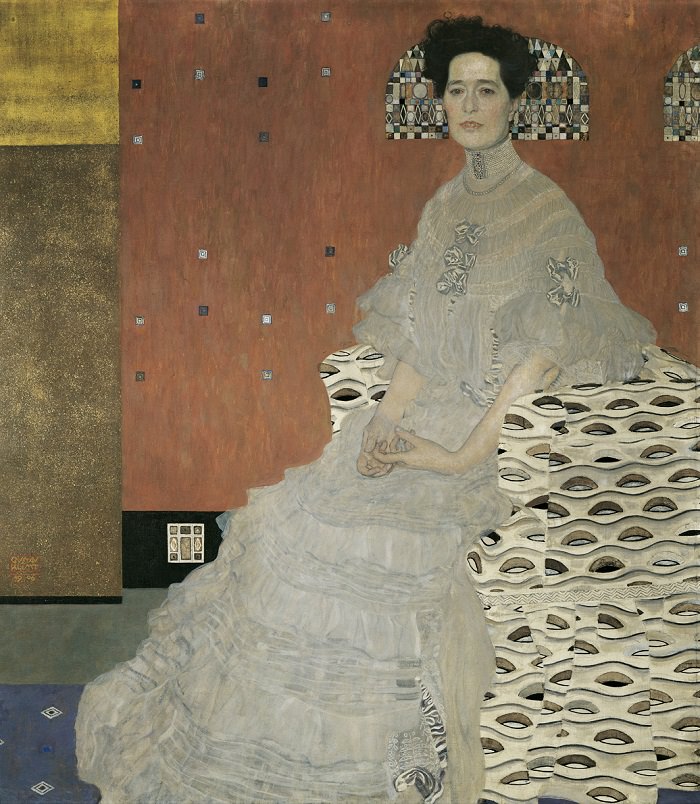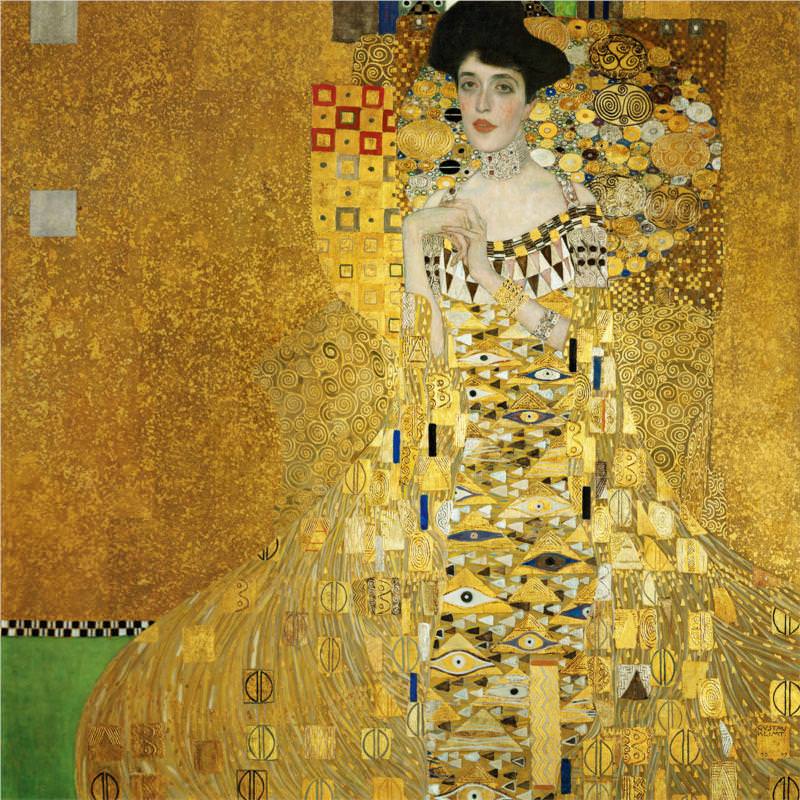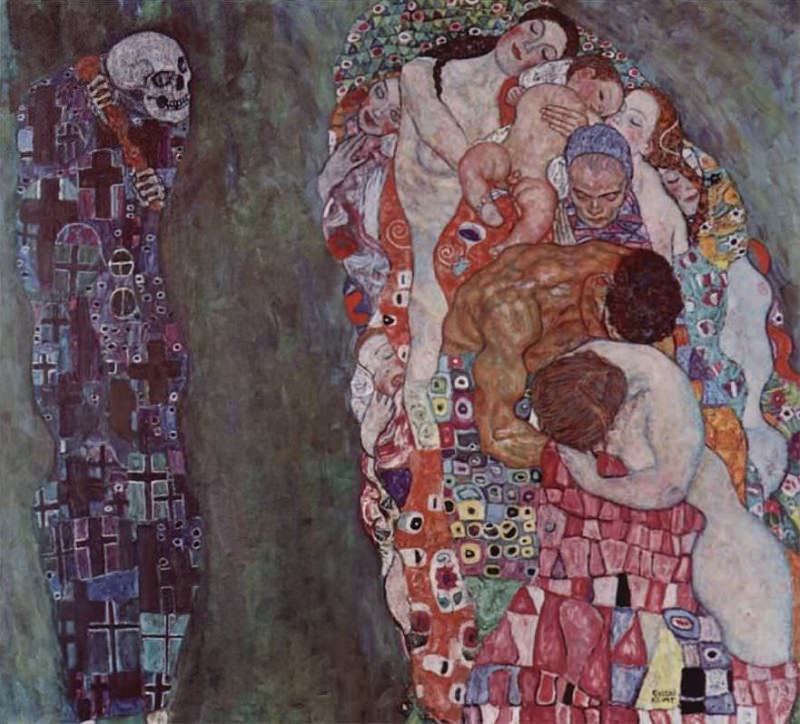Gustav Klimt was an Austrian painter, also the founder of the Vienna Sezession. In 1883 He had opened an independent studio where he specialized doing murals. Most of his beginning works owned a classical style that was common of late 19th-century painting. One of his murals created later in his career, the Beethoven Frieze (1902) is characterized by precise linework and the flat, vibrant decorative patterns of gold leaf and colour. It was originally intended for a composer and was only ever displayed once until 1986. The meaning behind the painting is intended to portray the desire for happiness in a world that’s suffering. Each woman represents a certain quality, lust, death, sickness, etc. This transitions to a happier scene when the mood is shifted from left to right.

One of Klimt’s most famous work is “The Kiss” (1908–09) scaling from 72inches by 72 inches this is one of his biggest works. It contains powerful large figures with gold on them. This era of paintings was known as the “golden period”. The male is portrayed as dominant due to the black squares on his clothing overpowering the other subject although both are blended together almost creating one figure.

The portrait of Fritza Reidler is a painting the demonstrated his use of sensuality of skin surrounded by various types of decor. This painting is fairly geometric, shown near the bottom of the picture as well as portions of the background. As soon as Klimt painted the womans face his imagination then took over, but his sole purpose was to attract the viewers eye to the face.

The portrait of his wife “Adele Bloch-Bauer” demonstrates the same qualities as his one of Reidler although has more of an egyptian influence. The painting itself has natural qualities especially found in the face and hands.

This painting is definitely different than the rest he painted portraying a different mood. The painting can be easily interpreted by the audience as death is portrayed on the left side of the painting as a grim reaper and life is distinguished with warm colours and people clustered up together.

Sources
https://www.gustav-klimt.com/Beethoven-Frieze.jsp
https://www.britannica.com/biography/Gustav-Klimt
Leave a Reply